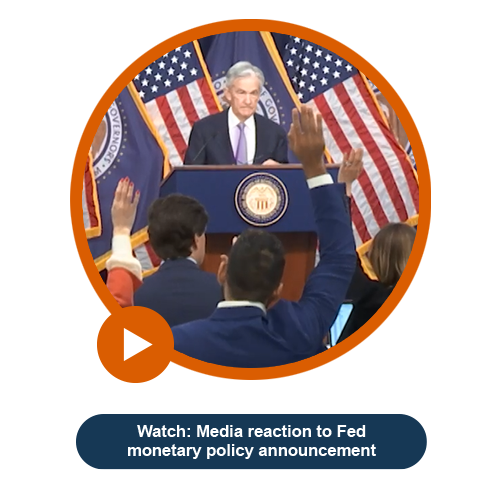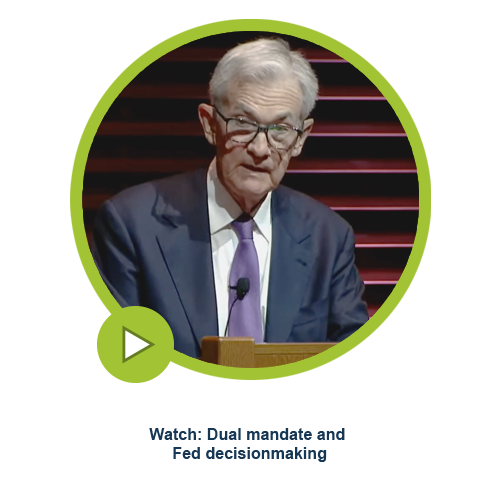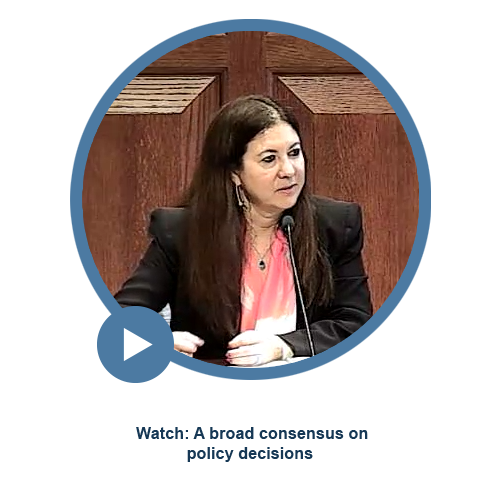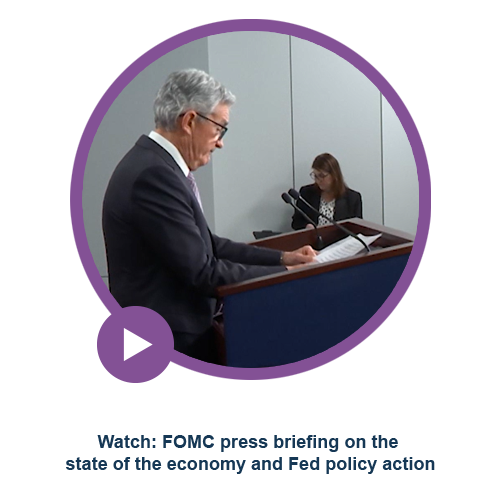![]()
It's what the Fed does to accomplish two key goals mandated by the U.S. Congress:

The Fed sets the stance of monetary policy to influence short-term interest rates and overall financial conditions with the aim of moving the economy toward maximum employment and stable prices.
In this way, the Fed's monetary policy decisions affect the financial lives of all Americans—not just the spending decisions we make as consumers but also the spending decisions of businesses: about what they produce, how many workers they employ, and what investments they make in their operations.

Though it specifies the goals for monetary policy, Congress has also provided the Federal Reserve operational independence. This flexibility ensures that monetary policy decisions can be directed toward the longer term, be based on data and objective analysis, and best serve the interests of all Americans.
At the same time, the Federal Reserve is accountable to Congress and the American people for its actions. It achieves accountability by being transparent about its policy deliberations and actions through a range of official communications.
Twice a year, for example, the Fed Chair goes to Capitol Hill to testify before congressional committees on current economic developments as well as the Fed's actions to promote maximum employment and stable prices.
"We are committed to providing clear explanations about our policies and activities. Congress has given us an important degree of independence so that we can effectively pursue our statutory goals based on objective analysis and data." —Chair Jerome H. Powell
When necessary, the Fed changes the stance of monetary policy primarily by raising or lowering its target range for the federal funds rate, an interest rate for overnight borrowing by banks.
Lowering that target range represents an "easing" of monetary policy because it is accompanied by lower short-term interest rates in financial markets and a loosening in broader financial conditions. This action may be needed if the economy is sluggish or inflation is too low. Raising the target range represents a "tightening" of monetary policy, which raises interest rates and may be necessary if the economy is overheating or inflation is too high.
A change in the federal funds rate normally affects, and is accompanied by, changes in other interest rates and in financial conditions more broadly; those changes will then affect the spending decisions of households and businesses and thus have implications for economic activity, employment, and inflation.

The Federal Open Market Committee, or FOMC, is the entity that decides on an appropriate monetary policy by setting the target for the federal funds rate.
FOMC policymakers rely on a broad range of information in their assessments and deliberations. They analyze the most up-to-date economic data and review reports and surveys from consumer, business, and financial market contacts.
The Federal Open Market Committee's decision to ease (as in this example) or tighten monetary policy sets off a chain of events.

Once the FOMC determines the stance of policy appropriate to achieve its dual mandate objectives, it must then make sure this stance is effectively implemented.
The Fed primarily conducts monetary policy through changes in the target for the federal funds rate. To encourage short-term interest rates to move close to the target range, the Fed uses various policy tools including:
The Fed also has other tools that it sometimes uses, such as large-scale asset purchases (sometimes known as quantitative easing) or forward guidance (setting the public’s expectations for future actions by the Fed).
The members of the Federal Reserve's Board of Governors in Washington, D.C., and the presidents of the regional Federal Reserve Banks participate in Federal Open Market Committee meetings. At these meetings, this group of policymakers discusses the state of the national economy as well as economic conditions prevailing across different parts of the United States, and they deliberate on an appropriate policy course to support strong labor markets and price stability.
To communicate its policy actions to the public, the FOMC releases written statements after every scheduled meeting. In addition, the Chair conducts a press conference after each meeting.
It's what the Fed does to accomplish two key goals mandated by the U.S. Congress: